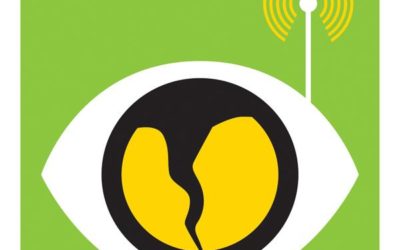Thirty years ago, Ernestine Ruben snapped a portrait of me. Back then Ernie was doing “bodyscapes,” photos of body parts taken at such close range that you couldn’t recognize what they were. The bottom of a foot, a neck nape, the crook of an arm or leg all turned into high-resolution abstract images. To this day I can’t recognize myself.
The U-M grad is now a world-famous photographer whose current exhibit at the U-M Museum of Art is another series of portraits—this time of a world-famous architectural structure: Willow Run. The Ford plant that turned out B-24 “Liberator” bombers during WWII was the largest factory in the world, 3.5 million square feet, employing 42,000 workers. It was a crucial component of winning the war.
Today most of it is gone, but Ruben got there before the wrecking crew in 2014, and her results are spectacular. Cavernous vistas, endless pillars, pipes, vents, stairs, and fans—everywhere fans. Massive ceiling lights and windows with the sun streaming through and bouncing off the shiny floor. There are no people, giving the photos a dreamy, eerie, and haunting effect.
Ruben did not set out to document Willow Run—she uses its lines, angles, shapes, and lighting as a palette for her otherworldly images. The photos are shot in color, though the color had to be coaxed from what is largely a black and white and gray setting (hey, it’s a factory). The overall effect is a cultural and personal afterimage, spiritual and ethereal without a hint of urban ruin porn.
Displayed in the photography gallery, the airiest and most relaxed gallery in the museum, the show includes twenty-one works: three large-scale prints (four by five feet) and eighteen smaller ones. Half of the images are straightforward photography using archival pigments. The others are double exposures, combining the Willow Run images with photographs of viscous substances. The result is spooky, evoking ghosts. Ruben calls them “memory scapes.” I never saw Willow Run myself, but I sensed the heroic lives that once inhabited that hallowed ground.
The exhibit also includes a fascinating twelve-minute film by Ruben and videographer Seth Bernstein tracing Ruben’s exploration of the factory, with an original score by Grammy Award–winning composer Stephen Hartke. In it she marvels at the space and reminisces about her grandfather, Albert Kahn, who designed it.
Ernestine Ruben at Willow Run continues through August 20.





